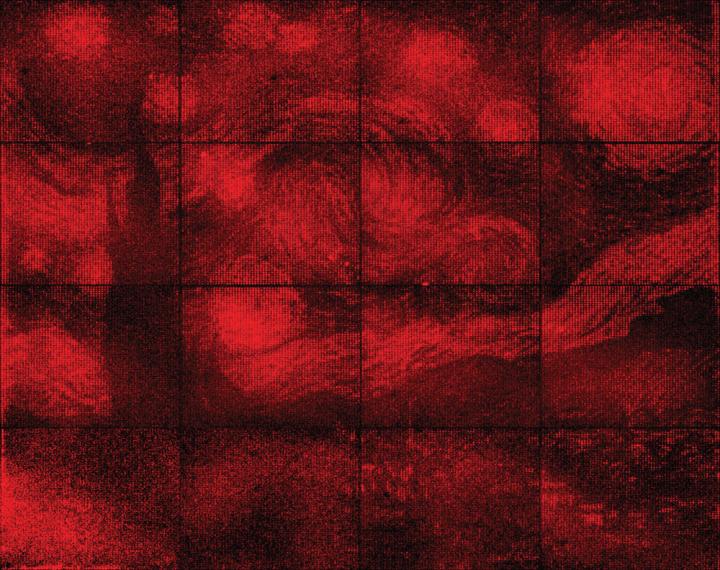DNA origami creates a microscopic glowing Van Gogh
July 15, 2016

This reproduction of van Gogh’s The Starry Night contains 65,536 glowing pixels but is just the width of a dime across, as a proof-of-concept of precision placement of DNA origami (credit: Paul Rothemund and Ashwin Gopinath/Caltech)
Using folded DNA to precisely place glowing molecules within microscopic light resonators, researchers at Caltech have created one of the world’s smallest reproductions of Vincent van Gogh’s The Starry Night. The feat is a proof-of-concept of how precision placement of DNA origami can be used to build hybrid nanophotonic devices at smaller scales than ever before.
DNA origami, developed 10 years ago by Caltech’s research professor Paul Rothemund, is a technique that allows researchers to fold (in a test tube) a long strand of self-assembling DNA into any desired shape. The folded DNA then acts as a scaffold (support) onto which researchers can attach nanometer-scale components. KurzweilAI has reported extensively on DNA origami — most recently, an automated design method for creating nanoparticles for drug delivery and cell targeting, nanoscale robots, custom-tailored optical devices, and DNA as a data storage medium, for example.
Meanwhile, over the last seven years, Rothemund and associates have refined and extended DNA orgami so that DNA shapes can be precisely positioned on almost any surface used in the manufacture of computer chips. Now, in a Nature paper on July 11, they report the first application of the technique — using DNA origami to install fluorescent molecules into microscopic light sources for use in single-molecule detection, quantum computers, and other applications.
The work was supported by the Army Research Office, the Office of Naval Research, the Air Force Office of Scientific Research, and the National Science Foundation.
Abstract of Engineering and mapping nanocavity emission via precision placement of DNA origami
Many hybrid devices integrate functional molecular or nanoparticle components with microstructures, as exemplified by the nanophotonic devices that couple emitters to optical resonators for potential use in single-molecule detection, precision magnetometry, low threshold lasing and quantum information processing. These systems also illustrate a common difficulty for hybrid devices: although many proof-of-principle devices exist, practical applications face the challenge of how to incorporate large numbers of chemically diverse functional components into microfabricated resonators at precise locations. Here we show that the directed self-assembly of DNA origami onto lithographically patterned binding sites allows reliable and controllable coupling of molecular emitters to photonic crystal cavities (PCCs). The precision of this method is sufficient to enable us to visualize the local density of states within PCCs by simple wide-field microscopy and to resolve the antinodes of the cavity mode at a resolution of about one-tenth of a wavelength. By simply changing the number of binding sites, we program the delivery of up to seven DNA origami onto distinct antinodes within a single cavity and thereby digitally vary the intensity of the cavity emission. To demonstrate the scalability of our technique, we fabricate 65,536 independently programmed PCCs on a single chip. These features, in combination with the widely used modularity of DNA origami, suggest that our method is well suited for the rapid prototyping of a broad array of hybrid nanophotonic devices.